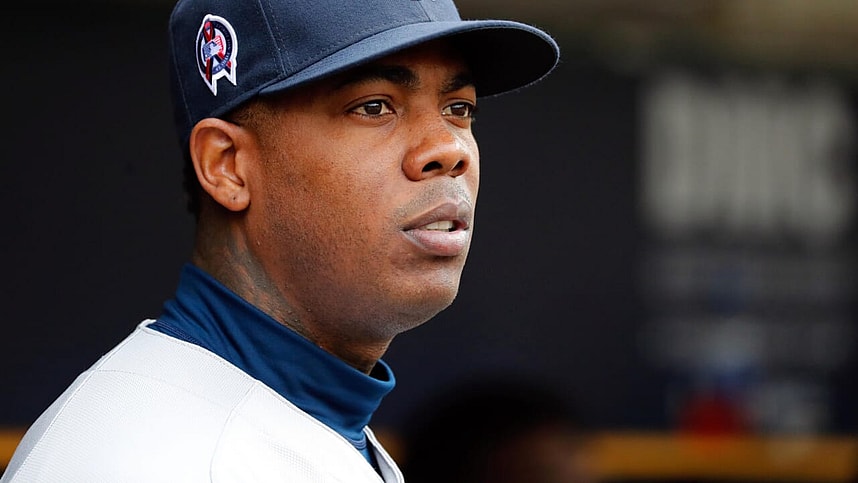
The New York Yankees have come to depend upon the Cuban Missle, Aroldis Chapman, since they first acquired him in 2016, traded him to the Cubs that year for Gleyber Torres, then got him back for the 2017 campaign. He’s had his moments of worrisome inconsistency since his return, but he still remains one of the top relievers in baseball.
Inking a new contract with the New York Yankees, Chapman now has a full no-trade clause (it was limited under the previous contract), an extra $1 million in annual salary (up to $16 million) over the next 2 seasons, and gave him another season at $18 million in salary. I think it was quite obvious that Chapman wanted to stay a Yankee, and the Yankees wanted to keep him.
But Was It the Right Call?
There was a stretch in 2017 when Aroldis Chapman was so bad he lost the closer spot. It took a few weeks, closer to a month for him to get it back. This isn’t what you get from a guy who had just won the World Series and still had one of the best fastballs in baseball. Chapman chalked up a lot of his inconsistency in 2017 to overuse by Joe Madden in the Cubs championship run.
But isn’t that what you do? You go the extra mile in the last games of the year to ensure that you’re the team has the best chance of winning?
In 2016, his combined totals for the year were 58.0 innings pitched, 90 K’s, 36 saves, an ERA of 1.55, and a whopping 32 hits given up. In the postseason, Chapman threw 15.2 innings, 21 K’s, but his postseason ERA was doubled was his regular season ended. Is it possible that Chapman, by sheer luck, got through the most difficult time a relief pitcher can go through by sheer luck?
Chapman’s Postseason Stats
In total, his career postseason ERA is still 2.45, which is good, but not great when you’re job is to keep the other team from scoring in the 9th inning. In 32 postseason appearances, he has a paltry 9 saves. His ERA in the postseason as a Yankee is 6.75 in the 2017 and 2019 ALCS against the Astros. He’s given up 10 earned runs out of 13 total runs. He still has more strikeouts than innings pitched, but it’s not as stark a difference as in the regular season (Chapman has 54 strikeouts to 36.2 innings pitched in the postseason, compared to an average of 109 strikeouts to 66 innings pitched.) (baseball-reference.com)
Now, let’s look at Zack Britton.
Britton has a career postseason average of 3.03, notably higher than Chapman. However, he posted a 0.00 ERA against the Astros in 2019. He has 15 K’s to 17.2 innings pitched in the postseason. He averages 77 K’s over 93 innings pitched during the regular season (since he came up in 2011, to the tune of a 3.07 ERA. This includes the 1.5 years he spent recovering from a serious injury. Unlike Chapman, Britton has actually lead the league in saves at one point in his career.
Does Britton Deserve More Attention?
Britton is the same age as Chapman. The biggest difference between Chapman and Britton is Chapman is on the downside of his career. Which is a weird thing to say about a pitcher who can still throw a fastball at 98 MPH? But the fact remains, Chapman was all about a 101 MPH fastball, which leads to him utilize that slider more this season, which cost the Yankees game 6 of the ALCS. Come to think of it, Britton is the more consistent of the two, with a better postseason record over the last 2 playoff appearances from the Yankees.
Yea… Chapman, a 2016 World Series champion, didn’t deserve the money the Yankees gave him. That’s money we could have given our prospective new ace.
More about: NBA New York Yankees